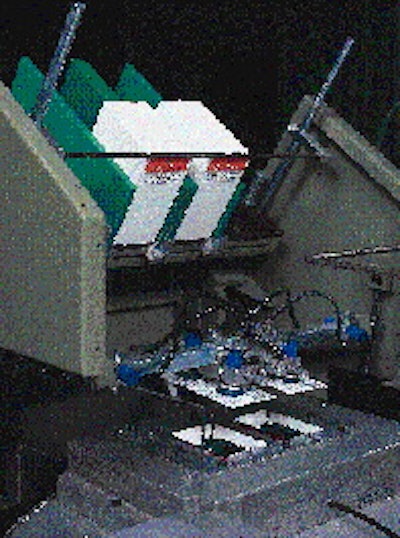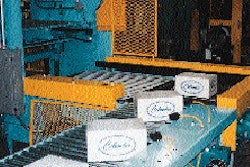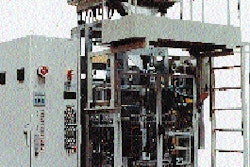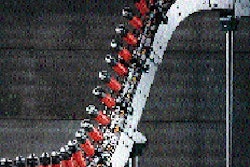In January cosmetics maker Del Laboratories launched a new product-its Sally Hansen® brand Triple Strong(TM) Advanced Gel Nail Fortifier-in what is believed to be one of the first mass-market all-paperboard blister packs in the U.S. Slow to take off in the U.S., all-paperboard blister packs are more popular in Germany. That's because Germany's notoriously tough environmental laws favor packaging made of 100% recyclable materials. Packages that make recycling difficult, such as paper/plastic blister packages, result in an economic penalty assessed against the packager. Such a climate has boosted the incentive to switch to a single-material, paperboard blister pack. Without such incentive, however, U.S. packagers have been slow to adopt a package that many designers feel obscures what a blister is ostensibly designed to showcase-the product. "We've got some real problems with [the visibility issue]," affirms Robert Kapnek, vp of creative services for Farmingdale, NY-based Del Laboratories. Ironically, it was none other than Kapnek himself who helped design the Sally Hansen package. The blister's two components are both supplied by Del's folding carton supplier Textile Printing (Chattanooga, TN). The blister is 14-pt clay-coated SBS that's heat-sealed to a clay-coated 24-pt SBS backing card after the product is loaded. The blister is offset-printed in four colors plus a heat-resistant aqueous coating to prevent ink smear during heat sealing. The backing card is printed in three colors with the same aqueous coating. The product retails for $5.95 at drug stores and discounters nationwide. If lack of product visibility is such a concern, then why did Del Laboratories choose this single-material solution? Interestingly, Kapnek pursued an all-paperboard pack for another of the cosmetics firm's product lines that's marketed as a more environmentally aware line. It was while dealing with the visibility issue on this other line that the suitability of the package-with the addition of an all-important die-cut window-struck him for the Triple Strong product. Window is key The 11/4" H x 1" W window not only allows consumers to see the bottle, it allows them to touch it and feel it. It also ties into the three-ingredient graphic concept that Kapnek wanted to execute, whereby each of the product's three critical ingredients is reflected by a separately colored wall for three of the four walls of the blister. The colored walls slope from three different directions at a very gentle 45° angle toward the front. They converge at the die-cut window where the coloring theme is continued on the primary label of the glass bottle, which holds 0.45 oz of product. It was the combination of the large die-cut window-which addressed the product visibility issue-and the graphic color-coding that allowed the concept to work. Because Triple Strong is not considered part of Del Laboratories' environmentally aware product line, which was originally designated to first receive all-paper packaging, the environmental benefits are not touted on the exterior of the package. All that's shown is the cryptic "Envirokarton(TM)" on the back of the card. That trademark is actually owned by Interpak (Chattanooga, TN), the machinery supplier and subsidiary of Textile Printing. Envirokarton is the name given by Interpak to any all-paperboard package produced by its machines. (The blister machinery is actually manufactured by Germany's Adolf Illig; Interpak represents Illig's blister sealing equipment in the U.S.) Tough timing The package design was completed in September '95. Production was required to start up in December to meet Del Laboratories' January "on-counter" date. If the timing hadn't been so tight, Del would have looked into adapting its existing blister packaging equipment to handle an all-paperboard pack, according to operations vp Jim Lawrence. "However, the most important thing was not to miss the launch date. Since this was an important product for us, we didn't want to reinvent the wheel," Lawrence explains. "We would have had to do a considerable amount of work to make sure the existing equipment worked effectively," he says, though he does add that he has no doubts that such a conversion would have been possible. Instead, Del Laboratories chose Illig's HSP 35 b-4, a small-footprint rotary blister packaging machine, supplied by Textile Printing's Interpak subsidiary. Del Laboratories selected the smaller 2-up machine to start out slow to test market acceptance of the product. Most of Del's other blister sealing equipment is 4- and 6-up. Why Illig? "They've had a lot of experience with [all-paper blister technology]," says Lawrence, who needed assurance that the equipment would work as promised, the first time around. "And it did work," he confirms. "There was not a question of it from day one. It was running." The machine's operation is fairly simple. At the first station, two flat blister blanks are simultaneously pulled from the magazine by a cam-operated forming mandrel. (It uses vacuum cups built right into the face of the mandrel to pull the blanks). The mandrel, which is shaped like a formed blister, swings down and pushes the cards face down into a pair of cavities, which serve to "mold" the paper blisters into the desired shape. The paperboard is pushed entirely into the cavity except for four 1/4"-W flaps at the edges. The flaps remain exposed at the surface of the rotary table for heat sealing to the backing card at a subsequent station. The mandrel forming system sets the machine apart from traditional blister sealing machines. (In fact, by removing the mandrel and replacing the cavities with traditional tooling, the machine can seal regular plastic blister packages.) One of the challenges for Del's particular application was to design a mandrel that could pull Del's particular blister blank by vacuum cups. Normally, such vacuum cups would be in the center of the mandrel of the blister blank. However, much of the front panel of the blister blank is cut away to create the package's viewing window. So the vacuum cups had to be designed around the die-cut. Another challenge was handling the wide, sloping 45° angles of the blister walls, which are critical to the graphic design of the package. More typical is an angle that's closer to 90°, according to Mark Schmissrauter, vice president of Textile Printing, who is also affiliated with Interpak. "We had to design a special vacuum mechanism to keep those held down in the forming molds so they wouldn't pop out during manual loading," he says. One benefit: since the blister portion is shipped and stored flat, unlike a plastic blister, it eliminates the occasional jams associated with denesting. Once the blisters are held down in the cavities, the rotary table indexes the packages to the second station, where an operator places a bottle into each of the two blisters. A second operator replenishes the machine's card and blister magazines, as well as bottled product. Automatic card dispensing The rotary table indexes the packages to the third station, where an automatic card dispenser places a card face down on top of the blister, flush against the blister's sealing flaps. The packages then rotate to the fourth station, where the blister flange is heat-sealed to the front of the card. To create the bond, the back of the blister is supplied with a special water-based coating from Textile Printing that thermally bonds with the clay coating of the cardstock during the heat seal. The complete lack of plastics or solvents makes the package completely recyclable and repulpable, according to Interpak. When the finished packages return to the first station, they're removed by a set of vacuum cups attached to a laterally moving arm which picks the packages out of the cavities and transfers them to a takeaway chute, where they're released. Blisters proceed to an exit conveyor where a third operator manually packs them into a corrugated shipper. The forming mandrel then plucks the next two flat blanks from the magazine to repeat the cycle. Lawrence says the machine averages about 8ꯠ to 10ꯠ packages/shift, or about 20/min. Mostly standard materials While the printing and cardstock is standard, says Textile's Schmissrauter, the blister undergoes a few additional manufacturing steps. It's die-cut into that shape with angled edges that meet when formed into the final blister shape. (On Del's blister machine, it wasn't necessary to seal these edges together, though Schmissrauter says the machine is capable of doing so.) The blister is scored around the center and perforated at the edges to form the flange that is heat-sealed to the front of the card after product is loaded into the blister. The perforated flaps are never actually separated; Schmissrauter explains that perforations make it easier for the Illig machine to fold the paperboard at the edges once blisters are placed in the cavities. Costs are close What are the economics of the all-paperboard blister compared to a plastic/paper combination? Pretty close, says Lawrence. "The problem with any comparison is that we make our own blisters. So any time we have to buy on the outside it's more expensive. But in this case, only marginally so." The cards cost the same as a regular card, he says, and the "blister itself is probably slightly more expensive than a plastic blister," says Lawrence. Schmissrauter makes the claim that paper blisters are more flexible for small-quantity orders. "You have to tool up on plastic blisters, whereas steel rule dies are a lot cheaper than steel cavities to form plastic blisters," he says. However, this machine does have the added expense of the mandrel forming system (versus simple nests for holding plastic blisters), so such a comparison isn't entirely fair. Details on the economics of the equipment were not available at press time. Although Del uses just the one package size, the mandrel forming system and female cavities can be changed out to accommodate different-sized blisters, should Del choose to do so. According to Schmissrauter, separate tooling is roughly comparable in cost to new nests on a traditional plastic blister sealer. What does the future hold? Currently the company is evaluating the product's sales performance; Lawrence says early returns look promising. If the product does well, the company will look into adding capacity for all-paperboard blister packaging, which could signal a more prominent footing for the all-paperboard blister pack in the U.S. market.























